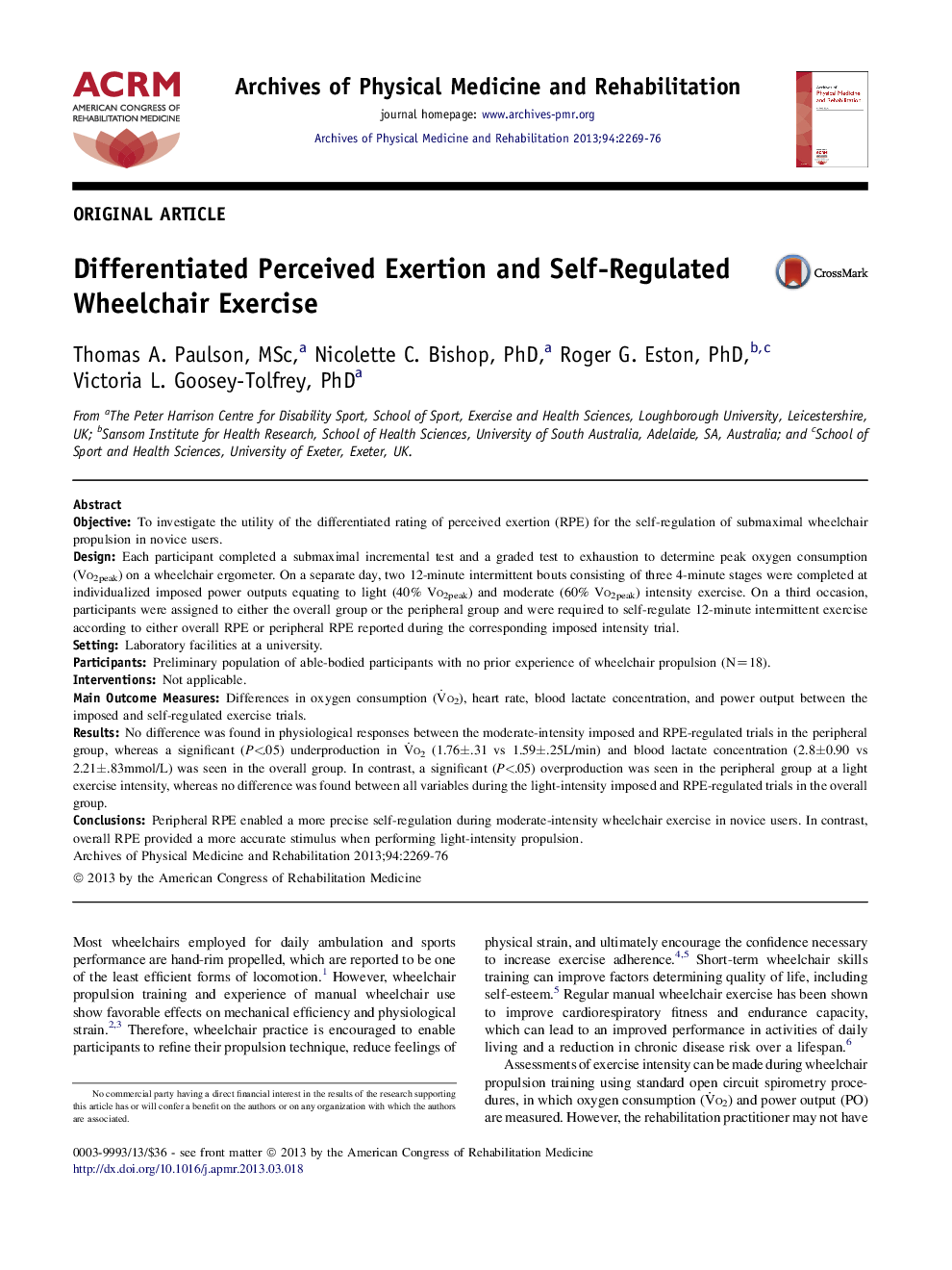| Article ID | Journal | Published Year | Pages | File Type |
|---|---|---|---|---|
| 3449134 | Archives of Physical Medicine and Rehabilitation | 2013 | 8 Pages |
ObjectiveTo investigate the utility of the differentiated rating of perceived exertion (RPE) for the self-regulation of submaximal wheelchair propulsion in novice users.DesignEach participant completed a submaximal incremental test and a graded test to exhaustion to determine peak oxygen consumption (Vo2peak) on a wheelchair ergometer. On a separate day, two 12-minute intermittent bouts consisting of three 4-minute stages were completed at individualized imposed power outputs equating to light (40% Vo2peak) and moderate (60% Vo2peak) intensity exercise. On a third occasion, participants were assigned to either the overall group or the peripheral group and were required to self-regulate 12-minute intermittent exercise according to either overall RPE or peripheral RPE reported during the corresponding imposed intensity trial.SettingLaboratory facilities at a university.ParticipantsPreliminary population of able-bodied participants with no prior experience of wheelchair propulsion (N=18).InterventionsNot applicable.Main Outcome MeasuresDifferences in oxygen consumption (V˙o2), heart rate, blood lactate concentration, and power output between the imposed and self-regulated exercise trials.ResultsNo difference was found in physiological responses between the moderate-intensity imposed and RPE-regulated trials in the peripheral group, whereas a significant (P <.05) underproduction in V˙o2 (1.76±.31 vs 1.59±.25L/min) and blood lactate concentration (2.8±0.90 vs 2.21±.83mmol/L) was seen in the overall group. In contrast, a significant (P<.05) overproduction was seen in the peripheral group at a light exercise intensity, whereas no difference was found between all variables during the light-intensity imposed and RPE-regulated trials in the overall group.ConclusionsPeripheral RPE enabled a more precise self-regulation during moderate-intensity wheelchair exercise in novice users. In contrast, overall RPE provided a more accurate stimulus when performing light-intensity propulsion.
